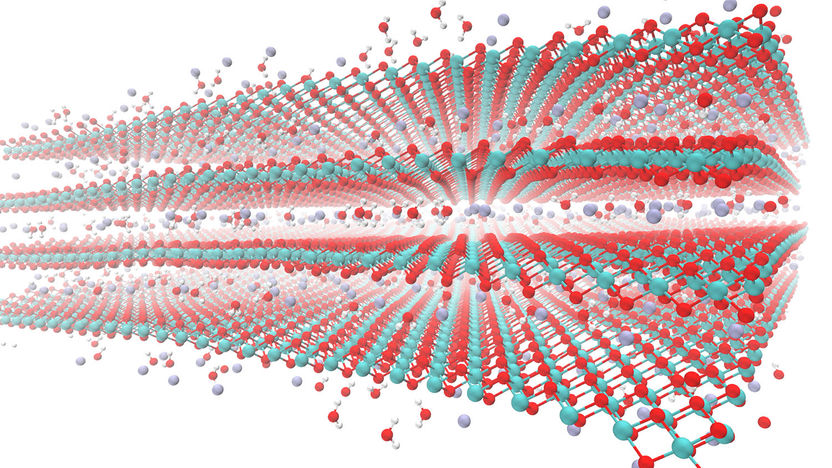Birnessite study offers insights for electrochemistry, energy storage
The adsorption of ions from the electrolyte at an electrode surface is a ubiquitous process, of use for both existing and emerging electrochemical energy technologies. But what happens when these ions penetrate very small spaces? To address this question, researchers at NC State re-examined the behavior of a “classic” material, birnessite.

Karthik Ganeshan
Birnessite is a hydrated layered form of manganese oxide that can quickly store and release a variety of positive ions from electrolytes for many cycles. This makes it promising for use in high-power electrochemical energy storage, or in emerging electrochemical technologies such as desalination and rare element recovery from water. What’s more, it’s an abundant material, easy to make, and non-toxic.
The mechanism by which birnessite can uptake and release cations has been described as both faradaic (involving charge-transfer) and non-faradaic (involving only electrostatic ion adsorption).
To address this debate, the researchers used both experimental and computational approaches.
“In the energy storage community, we normally think of charge storage as being either faradaic or non-faradaic,” says Shelby Boyd, first author of a paper on the work and a postdoctoral researcher at North Carolina State University. “At planar interfaces, faradaic refers to the specific adsorption of an ion to an electrode with corresponding charge transfer, as in a redox reaction. Non-faradaic refers to purely electrostatic adsorption without charge transfer. People have largely presented these mechanisms of charge storage as being mutually exclusive. But what we found with birnessite is that the nanoconfined interlayer structural water mitigates the interactions between intercalated cation and the birnessite. This results in an intermediate behavior from the two types of adsorption extremes at planar interfaces.”
The researchers were also able to prove experimentally and theoretically that water in between the layers of birnessite is effectively serving as a buffer that makes capacitive behavior possible without causing significant structural change in the birnessite.
Ultimately, the researchers say the findings highlight two future directions for the work, both of which are promising for the broader field of electrochemistry.
“The field of electrochemistry is undergoing a renaissance,” says Veronica Augustyn, corresponding author of the paper and an assistant professor of materials science and engineering at NC State. “The ability to connect experimental results with atomistic-scale modeling of the electrochemical interface allows us to probe deeper than ever before and ask questions like: What roles are the solvent playing? What might happen when the reaction occurs under confinement? By understanding the capacitive mechanism of a material like birnessite, we set the stage for understanding more complex electrochemical reactions.”
Original publication
Other news from the department science
Most read news
More news from our other portals
See the theme worlds for related content
Topic World Battery Technology
The topic world Battery Technology combines relevant knowledge in a unique way. Here you will find everything about suppliers and their products, webinars, white papers, catalogs and brochures.

Topic World Battery Technology
The topic world Battery Technology combines relevant knowledge in a unique way. Here you will find everything about suppliers and their products, webinars, white papers, catalogs and brochures.


























































